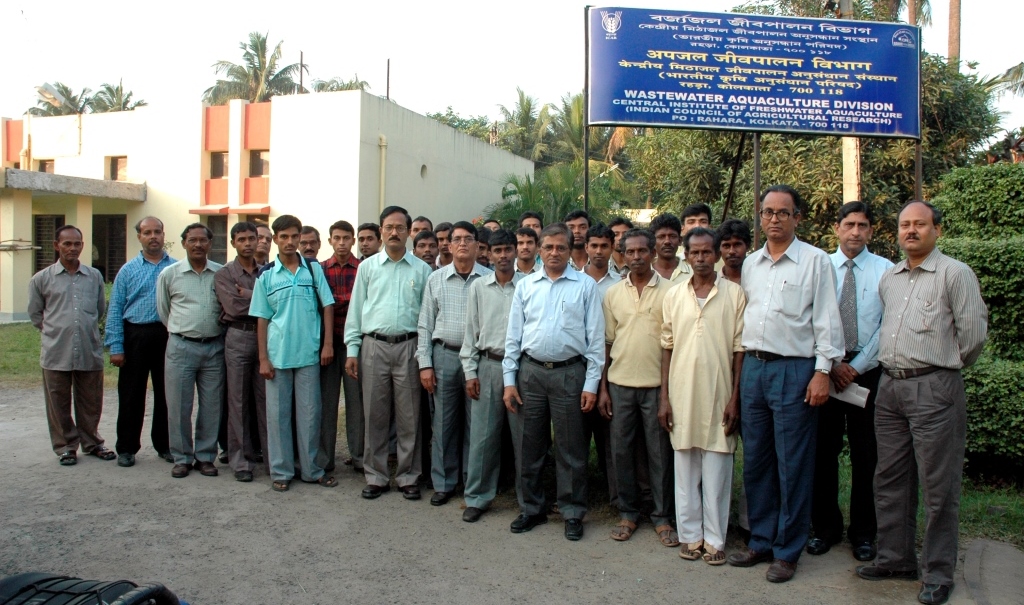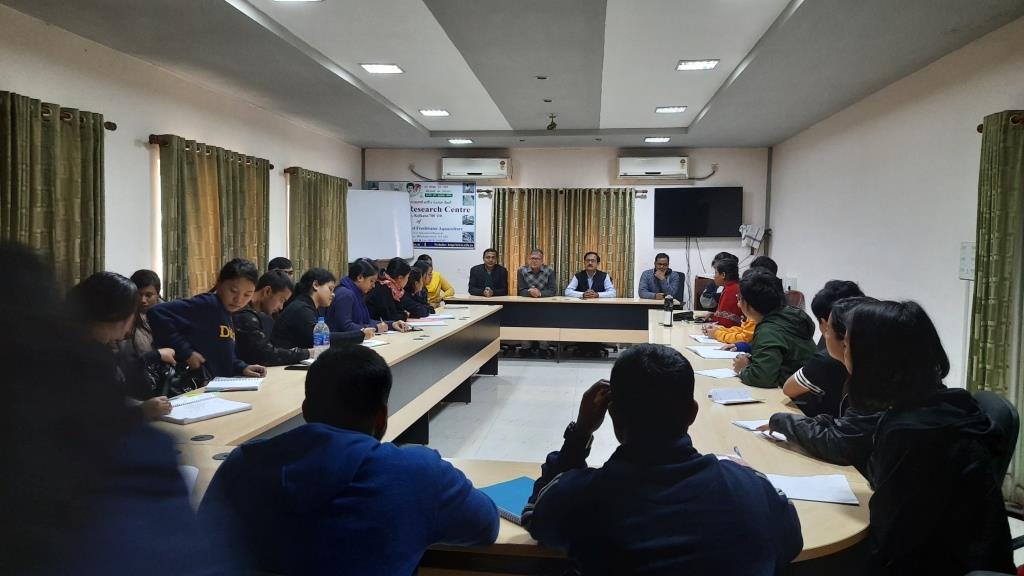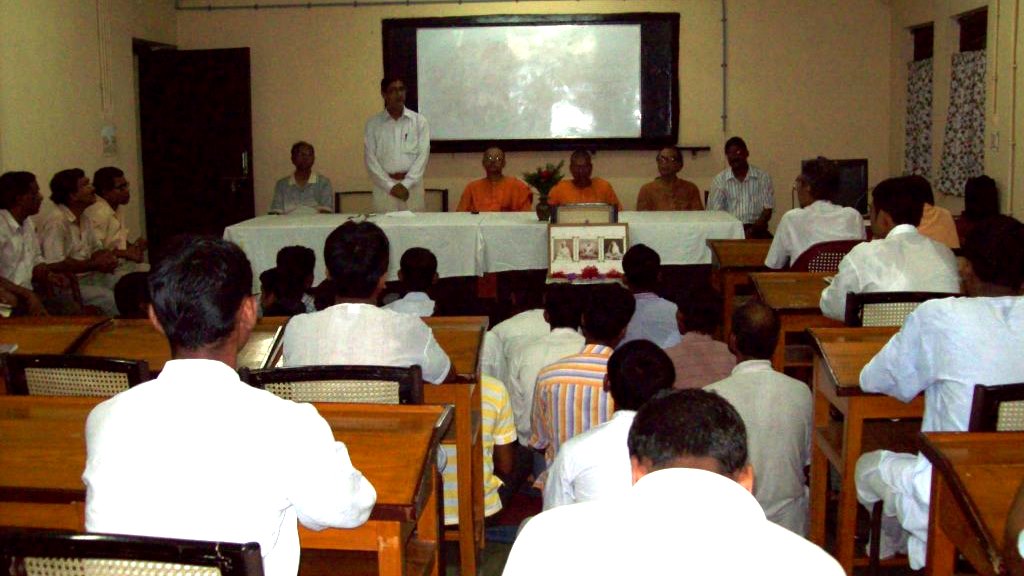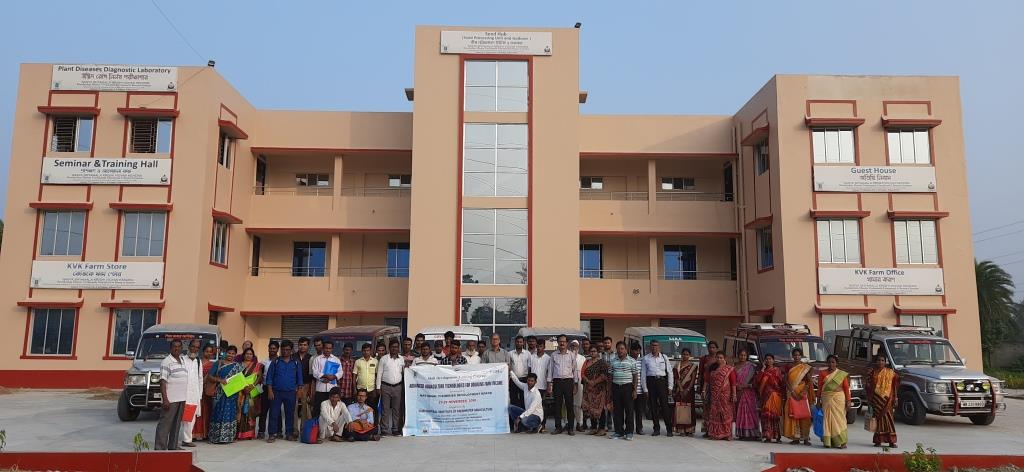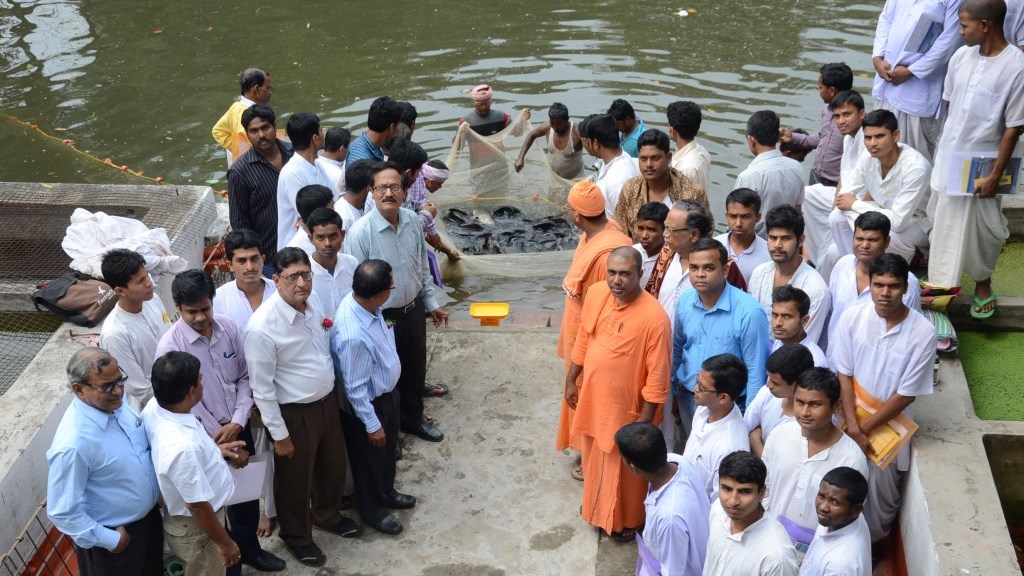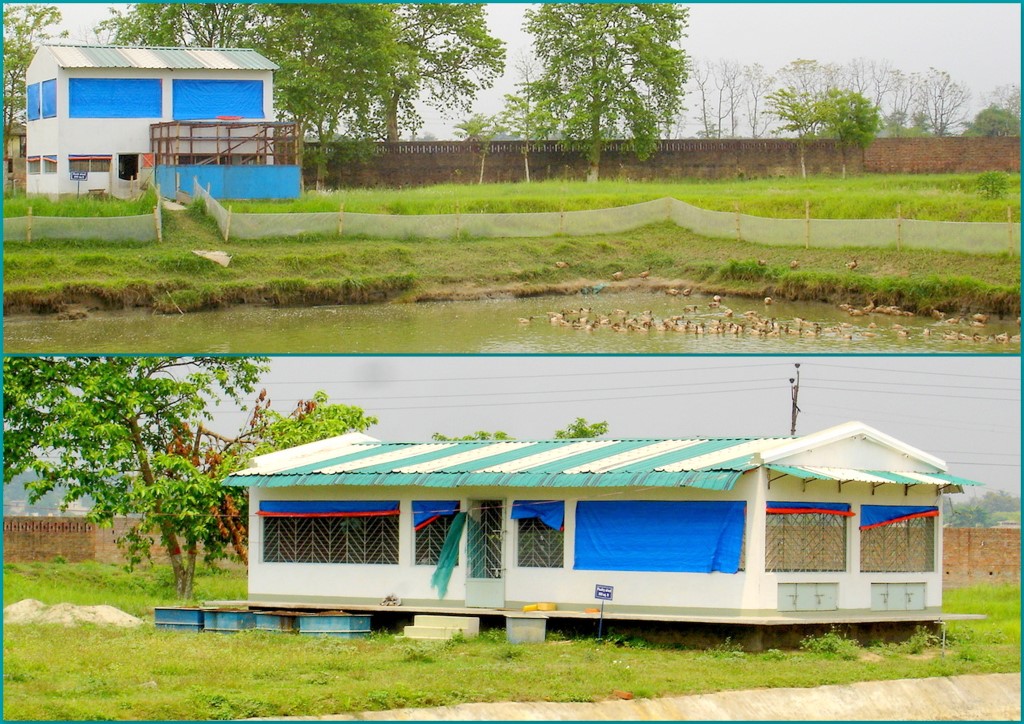- Screen Reader >>
- Skip to Main Content >>
- T
- T
- T
- T
- Font Size:
- A- A A+
- Help
- FAQs
- Contact Us
रहरा
क्षेत्रीय अनुसंधान केंद्र, रहरा
रहरा केंद्र का संक्षिप्त इतिहास और उत्पत्ति
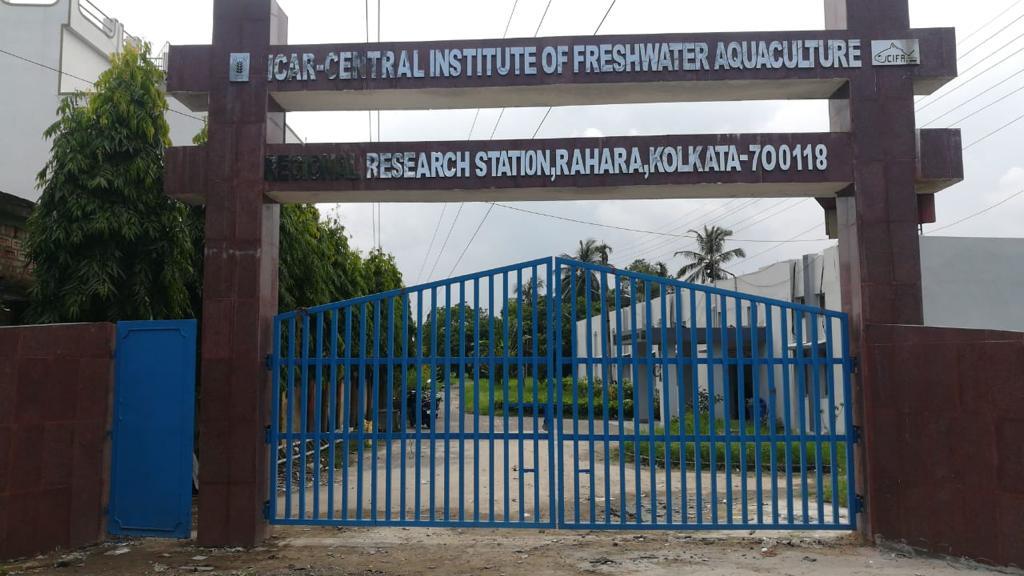
Considering the potentialities of increasing fish production and productivity of this region. Scientific investigation on the use of sewage in aquaculture was initiated in two rented ponds at Rahara in 1975 for collecting necessary basic information. The activities were soon expanded and a 10.5 ha marshy land was developed into “Wastewater-fish farm” in the early eighties under the banner of the erstwhile CIFRI, Barrackpore, and named as Wastewater Aquaculture Division of CIFA in 1987 when CIFA, Bhubaneswar became an independent Institute and since then diversified research on low-cost aquaculture technology in wastewater ecosystem have been developed and are being upgraded for eliminating cost intensive inputs like feed, manure and fertilizer etc.
Of late it was renamed as Regional Research Centre (RRC), Rahara and its Field Station, Kalyani of ICAR-CIFA, which has been functioning with the mandate to conduct research to cater the region specific needs to conduct research on the utilization of waste-water in aquaculture, to undertake studies on diversification of aquaculture practices and to disseminate aquaculture technologies through demonstration, capacity building of officials from various organizations and imparting need based training to fish farmers of West Bengal, NEH and other eastern states. At present the centre is known as Regional Research Station, Rahara of ICAR-CIFA.
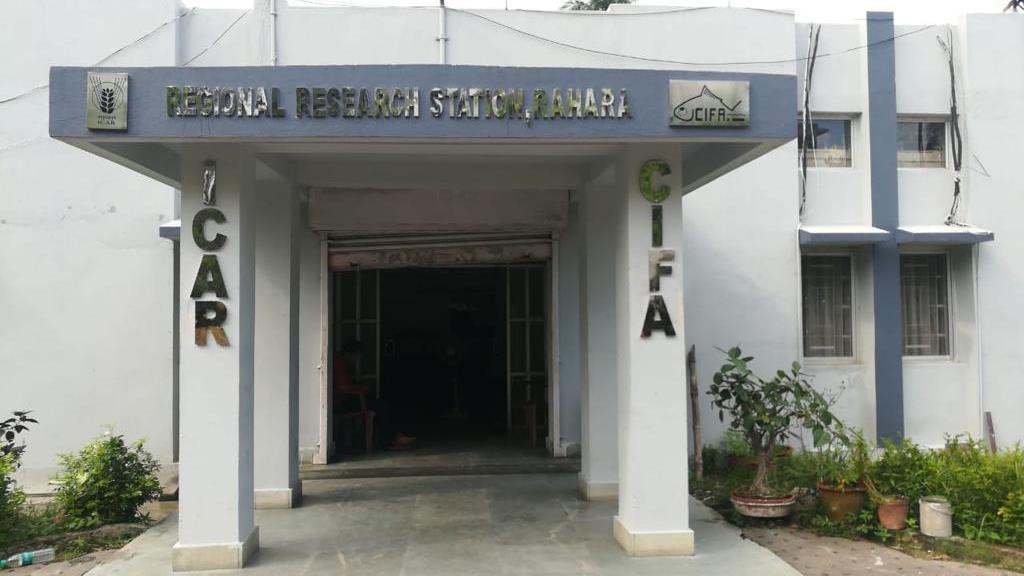
Regional Research Station is situated at Rahara, Kolkata, North 24-parganas Dist., West Bengal, Kolkata - 700 118. The Centre is well connected with Road, Rail and Air. The Netaji Subhash Chandra Bose International Airport at Dumdum is only 14 km away. Sealdah and Khardah Railway stations are 18 and 2 km away from the Research Station, respectively. Frequent auto rickshaw services are available through-out the day from Khardah railway station.
Address:-
Rahara Regional Station,
P. O. Rahara,
Kolkata- 700118, West Bengal
E-mail: rahara_cifa@rediffmail.com
Telefax: 033 – 25683023
Field Station, Kalyani

The Station had its beginning as Frog Culture Division of the erstwhile ICAR-CIFRI, Barrackpore in 1975. Later, the Frog Culture Unit was renamed as Regional Research Centre of Wastewater Aquaculture Division, Rahara in the year 1998. Later on it was further renamed as Field Station, Kalyani which is situated at Nadia District, West Bengal with campus having 7.0 ha land area. The station is equipped with 15 ponds of different sizes having 1.2 ha water spread area for rearing and production of fish, having one pabda hatchery, experimental shed one poultry house, one duck shed, etc.
Address:-
A/5 (Phase III), Santal Para,
P.O. Kalyani, Nadia - 741235, West Bengal
E–mail: cifakalyani96@gmail.com,
Telephone: 033 – 25824015
Staff strength (RRC Rahara & Field Station Kalyani)
| Category | In position | Category | In position | Category | In position |
|---|---|---|---|---|---|
| Principal Scientist | 3 | Technical | 0 | Skilled Supporting Staff | 3 |
| Senior Scientist | 1 | Assistant | 2 | SRF/JRF/TA/LA/YP | 2 |
| Scientist | 3 | Casual Labourer | 11 | ||
| Contractual labourer | 18 |
Staff at Rahara

Dr. Baidyanath Paul
Principal Scientist
& Scientist-in-charge
Baidyanath[dot]Paul[at]icar[dot]gov[dot]in

Dr. Rathindra Nath Mandal
Principal Scientist
Rathindra[dot]Mandal[at]icar[dot]gov[dot]in
Arabinda Das
Scientist
Arabinda[dot]Das[at]icar[dot]gov[dot]in
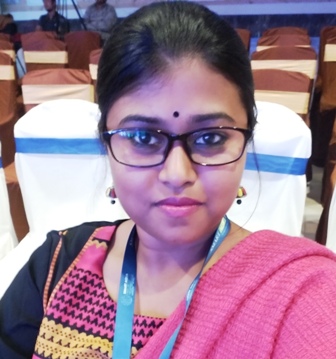
Dr. Farhana Hoque
Scientist
Farhana[dot]Hoque[at]icar[dot]gov[dot]in
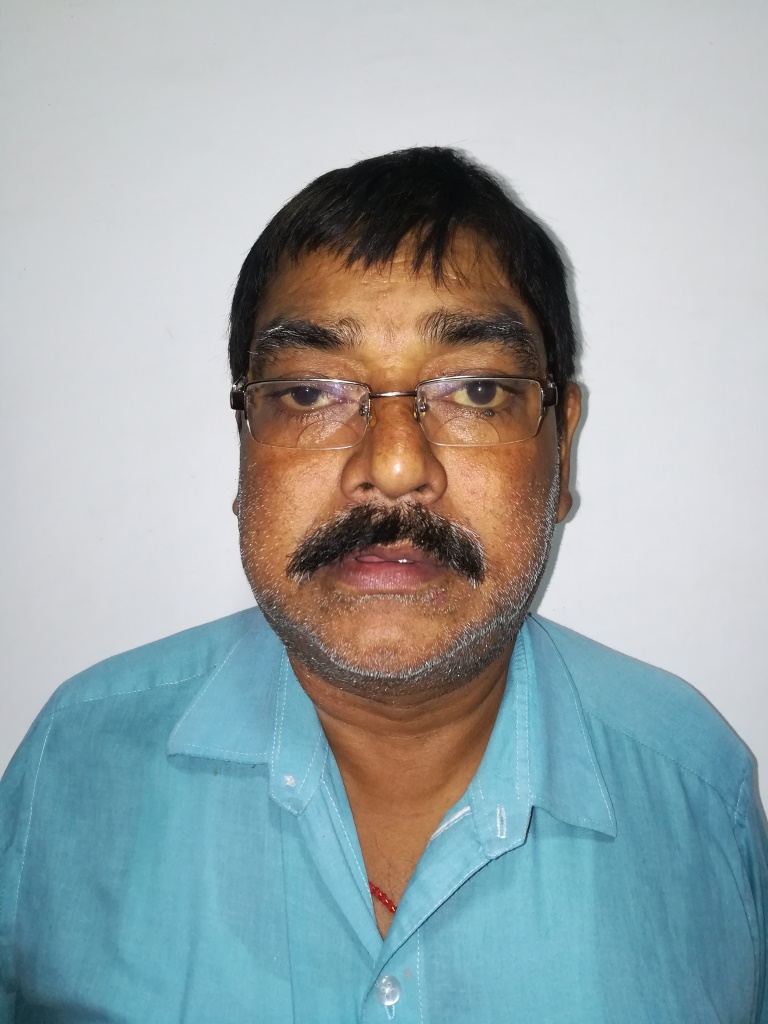
Sri Swamiji Sen
Assisstant
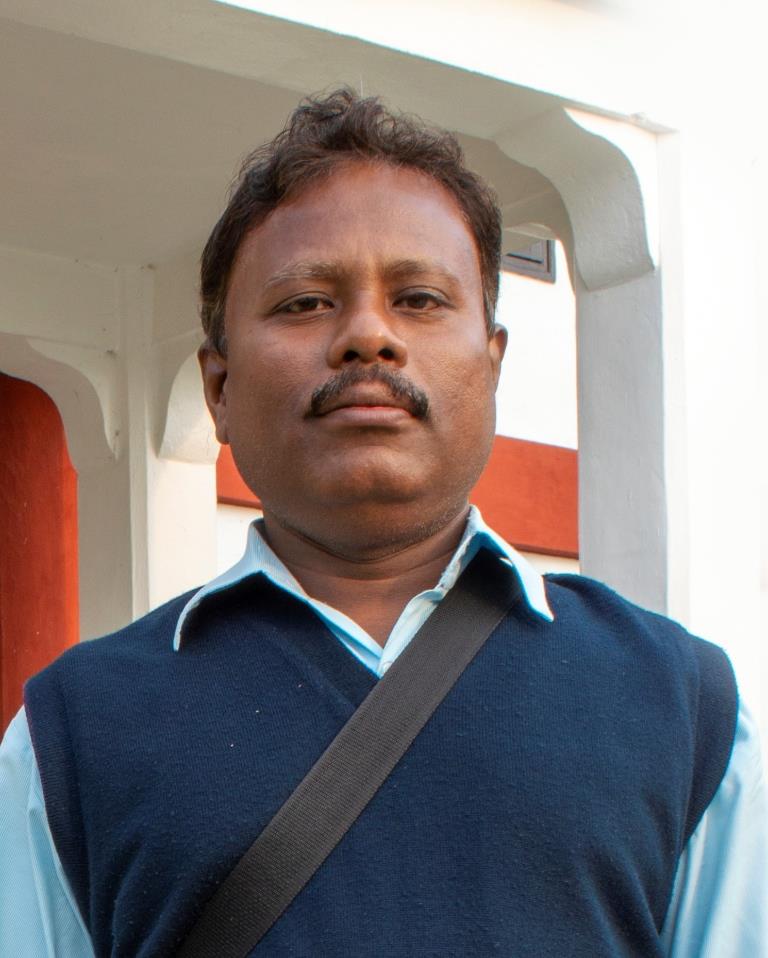
Sri Sukendu Biswas
Assistant

Mrs. Kiran Oraon
Skilled Supporting Staff
Mungli Sardar
Skilled Supporting Staff
Staff at Kalyani

Dr. Subhas Sarkar
Senior Scientist
Subhas[dot]Sarkar[at]icar[dot]gov[dot]in
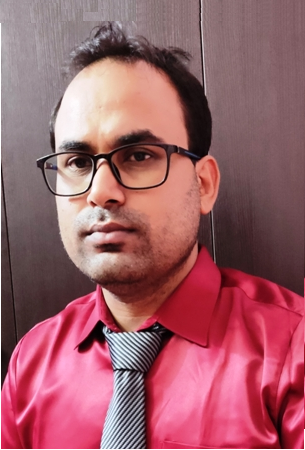
Ajmal Hussan
Scientist
Ajmal[dot]Hussan[at]icar[dot]gov[dot]in

Mrs. Manju Singh
Skilled Supporting Staff
Mandate
- Basic and strategic research for the development of sustainable culture systems for freshwater fish species
- Species and system diversification in freshwater and wastewater aquaculture.
- Human Resource Development through training, education and extension
Focal research area
- Utilization of wastewater & wastes of agro-industrial origin in freshwater aquaculture including integrated fish farming systems.
- Captive breeding, seed production and grow-out culture of important cultivable freshwater fin fishes.
- Development of new culture systems for freshwater aquaculture.
- Soil, water quality and fish health management for higher production.
- Application of Farm made feed for sustainable Aquaculture Production
- Livelihood development in West Bengal and NEH states through freshwater aquaculture.
List of On-going Projects
Institute
| # | Project Title | PI | Duration |
|---|---|---|---|
| Efficient use of critical inputs towards sustainable aquaculture in the Moyna of PurbaMidnapur, West Bengal through cluster approach | Dr. S. Adhikari | 01.04.2018- 31.03.2021 | |
| Growth performance of Hilsa, Tenualosa ilisha in captivity | Dr. D. N. Chattopadhyay | 01.04.2018- 31.03.2021 |
Externally Funded
| # | Project Title | Project Team | Duration |
|---|---|---|---|
| DBT funded Twinning project on “Improving Broodstock Management and Quality Seed Production of Ompok bimaculatus through Application of Molecular Endocrinology” | Dr. J. K. Sundaray, PI Dr P. P. Chakrabarti, Co-PI Mr. Arabinda Das, Co-PI Dr. Farhana Hoque, Co-PI |
27.06.2018 -26.06.2021 |
List of Completed Projects
Institute
| # | Project Title | PI | Duration |
|---|---|---|---|
| Development of Larval diet for Ompok bimaculatus, a high- valued fish of regional importance | Dr. B. N. Paul | 01.04.2019 to 31.3.2020 | |
| Evaluation of increasing production of safe fish with feed in sustainable waste water aquaculture | Dr. R. N. Mandal | 01/04/2015 to 31.03.2018 | |
| Studies on technical and economic feasibility of integrated crop livestock fish farming system involving Mystus gulio, E. vacha, C. reba, P. sarana and O. nilotics along with carps | Dr. P.P. Chakrabarti | 01/04/2015 to 31/03/2018 | |
| Carbon sequestration and carbon footprint in some aquaculture system | Dr. S. Adhikari | 01/04/2015 to 31/03/2018 | |
| Evaluation of production performance and quality assessment of carp utilizing potential organic wastes | Dr. R. N. Mandal | 01/04/2012 to 31/03/2015 | |
| Production performance of some high value regionally preferred SIFS in integrated culture system comprising agri-horti-crops and livestocks | Dr. P.P. Chakrabarti | 01/04/2012to 31/03/2015 | |
| Characterization and utilization of Wastes in Aquaculture | Dr.P.K.Mukhopadhyay | 01/04/2010 to 31/03/2013 | |
| Aquaculture Diversification and Wastewater Management | Dr.A.K Datta | 01/04/2007 to 31/03/2010 |
Externally Funded
| # | Project Title | PI | Duration |
|---|---|---|---|
| Risk and benefit assessment of an illegally introduced fish species Piaractus brachypomus Pacu in India | Co-PI: Dr. P.P. Chakrabarti | 01/04/2017 to 31/03/2018 | |
| Development of user friendly portable pabda hatchery with tubifex culture & rainwater harvesting facilities | Mr. Ajmal Hussan | 01/04/2017 to 31/03/2020 | |
| Productivity and production enhancement of Freshwater ponds through BMP and aquaculture for livelihood development of the Aila affected SC/ST Communities of Islands of Sunderbans, West Bengal | Dr. P.P. Chakrabarti | 01/04/2015 to 31/03/2018 | |
| Adaptation and mitigation strategies in fisheries and aquaculture to climate change with special reference to freshwater aquaculture | Dr.S.Adhikari | 01/04/2015 to 31/03/2020 | |
| Outreach Research Project on Nutrient profiling of Fish | Dr.B.N.Paul | 01/04/2013 to 31/03/2018 | |
| Stock characterization, captive breeding, seed production and culture of hilsa (Tenualosa ilisha) | Dr. D. N. Chattopadhyay | 01/04/2012 to 31/03/2017 | |
| Outreach Activity : Nutrient Profiling and Evaluation of Fish as a Dietary Component | Dr.B.N.Paul | 01/04/2008 to 31/03/2013 |
Future thrust area
- Efficient use of wastewater for sustainable aquaculture
- Diversification of candidate species and system in aquaculture
- Livelihood programme for poverty alleviation in West Bengal and NEH region through aquaculture technologies
- Capacity building through scientific aquaculture
Technologies/ Product developed
- Waste water aquaculture practices having 3-4 tonne/hactre/year production level have been developed.
- Distillery waste water having BOD level of 15-20 ppm can be used for aquaculture practices
- Split doses of waste water aquaculture practices provides maximum production
- Breeding, seed rearing and culture techniques of butter catfish Ompok bimaculatus and long whiskers catfish Mystus gulio
- Breeding & seed rearing protocol of hilsa shad Tenualosa ilisha.
- Development of portable FRP pabda hatchery having capacity to produce about 10,000 – 15,000 nos. of early fry in a single cycle
- Integrated of farming system models involving various high value and conventional horticultural crops, poultry and ducks
Training programmes conducted during 2019-2020
| # | Title | Place | Participants (no.) |
|---|---|---|---|
| Training on ‘Fish Nutrition and Feeding of Fish’ during 17-21 June 2019 | RRC, Rahara | 25 students, entrepreneurs, and farmers | |
| Training on ‘Induced breeding of IMC and culture Technologies” for Trainees of RKMSSSM, Belur Math, Belur’ during 03-10 July 2019 | RRC, Rahara | 29 rural youths covering a number of districts of West Bengal | |
| Training on ‘Induced breeding and seed production of Indian Major Carps’ 16-20 July 2019 | RRC, Rahara | 20 farmers, students, and entrepreneurs | |
| Training on ‘Captive breeding and seed production of indigenous catfishes with emphasis on Ompok and Mystus species’ during 30 July-03 August 2019 | RRC, Rahara | 37 farmers, students, and entrepreneurs | |
| NFDB sponsored training on ‘Aquaculture pond production and productivity management with special reference to climate change’ during 26-30 August 2019 | RRC, Rahara | 12 Govt. Officials, and entrepreneurs | |
| NFDB sponsored training on ‘Advanced aquaculture technologies for doubling farm income’ during 11-13, September 2019 | Kalyani FS., RRC-Rahara | 50 farmers | |
| NFDB sponsored training on ‘Advanced aquaculture technologies for doubling farm income’ during 27-29 November 2019 | Sasya Shyamala Krishi Vigyan Kendra’, RKMVU, Sonarpur | 50 farmers | |
| Training on ‘Recent advancement of freshwater aquaculture’ to officials of Tata Trust during 27-29 December | RRC, Rahara | 12 Tata Trust Officials | |
| NFDB sponsored training on ‘Integrated farming systems involving fish, livestock, and agri-horticulture crops’ during 06-10 January 2020 | Kalyani FS., RRC-Rahara | 16 Govt. Officials, farmers, and entrepreneurs |
Salient achievements
- The impact of sewage water for the safe fish production has been done successfully and the production levels varied from 3.0 to 5.0 t/ha/yr.
- Use of different feed additives (Plant attractants ) was developed to enhance feed intake of fish and Iron requirement of rohu was worked out.
- Different agro-industrial wastes viz., Dried Distilleries Grain Soluble (DDS), Breweries wastes, ghee residue, jute leaf powder etc were used as New Aquaculture feed ingredients
- The nutrient content of sixteen freshwater fish species was done under Nutrient Profiling of Fishes and the species covered are Labeo rohita, Catla catla, Cirrhinus mrigala, Labeo bata, Labeo calbasu, Labeo fimbriatus, Cirrhinus reba, Barbonymus gonionotus, Anabas testudineus, Clarias batrachus, Heteropneustes fossilis, Mystus vittatus, Channa striata, Ompok bimaculatus, Wallago attu and Pangasianodon Hypophthalmus.
- Feeding protocol of Ompok bimaculatus larvae was developed and the larval feed requires 40% protein and 8 % lipid.
- Fish can be cultured in waste water having BOD level of 15-20 ppm. Split doses of waste water application provides maximum production.
- Breeding performance of Indian Major Carps in relation to temperature in different states of India have been studied
- Developed grow-out culture method of Ompok bimaculatus at reduced water depth to conserve water
- Protocol on growth and survivability of Indian Major Carps under different temperature and salinity levels
- Carbon foot print and carbon sequestration of aquaculture ponds have been extensively studied
- First instance of lordosis in Pterygoplichthys, dropsy and scoliosis in Ompok bimaculatus and Dactylogyrosis in Mystusgulio were reported.
Achievements (Kalyani FS)
- Integrated farming system models involving various high value and conventional horticultural crops, poultry and ducks with fish.
- Breeding, seed rearing and culture techniques of butter catfish Ompok bimaculatus
- Breeding & seed rearing protocol of hilsa shad Tenualosa ilisha.
- Breeding and seed production techniques of long whiskers catfish Mystus gulio
- Development of portable FRP pabda hatchery having capacity to produce about 10,000 – 15,000 nos. of early fry in a single cycle.
Facilities
Infrastructure facilities at Rahara:
- The Rahara farm (10.5 ha) has effective water area of about 6 hectare comprising 8 nursery ponds, 9 rearing ponds, 13 stocking ponds, 2 spawner tanks and 3 paddy-cum-fish culture plots besides 7 circular cement cisterns of 0.018 ha each.
- Of the 4.5 ha of available land, about 1.0 ha is being utilized for Horticulture throughout the year eliminating the recurring labour expenditure on cleaning the weed infested dykes and at the same time generating revenue
- A well-equipped laboratory with Atomic Absorption Spectrophotometer (AAS), Gas Chromatograph (GC), Spectrophotometer, Lyophilizer, Socs Plus for fat extraction, Kel plus for crude protein estimation, Precision balance, Muffle furnace, Hot water bath etc. to conduct research and teaching in different area of Aquaculture.
- Laboratory for soil and water analysis.
- Treated and untreated domestic sewage from Titagarh municipality is being taken to the farm through a 1 km long underground pipeline leading to a deep sump from where it is drawn in the ponds and paddy plots using an electrical pump.
- One deep tube well is available to supply freshwater whenever required.
- An eco-hatchery complex and plastic hatchery is available to facilitate fish breeding.
- An experimental yard with flow-through system to conduct nutritional and other experimental studies.
- Space on integrated farming including paddy-cum-fish culture has focused attention on diversification and better utilization of fallow land.
- One conference cum training hall with video conferencing facility for conducting meeting and training programme with a capacity of 50 persons
Infrastructure (Field Station Kalyani)
- The Kalyani Field Station (7.0 ha) has effective water area of about 1.2 hectare comprising 4 nursery ponds, 3 rearing ponds and 9 grow out ponds
- Laboratory for soil and water quality analysis
- Basic laboratory for molecular work: laminar flowhood chamber, autoclave, bacteriological incubator, thermocycler, gel electrophoresis unit, gel documentation unit, -20◦C deep freeze, refrigerator, spectrophotometer, cooling centrifuge and power backup
- Hatcheries for catfish
- Experimental sheds
- Poultry house and Duck shed
- Training hall
Publications
| # | Title | Journal | Authors | Year |
|---|---|---|---|---|
| Pathogenesis and expression profile of selected immune genes to experimental Edwardsiella tarda infection in iridescent shark, Pangasianodon hypophthalmus | Aquaculture Reports 17, 100371
DOI: 10.1016/j.aqrep.2020.100371 |
Hoque, F., Pawar, N., Pitale, P., Dutta, R., Sawant, B., Babu, G.P., Choudhary, A., Sundaray, J. K. | 2020 | |
| Effect of water salinity levels on growth performance and survival of Catla catla, genetically improved Labeo rohita (Jayanti rohu) and Cirrhinus mrigala | International Journal of Oceanography and Aquaculture 4(2): 00190.
DOI: 10.23880/ijoac-16000190 |
Hoque, F., Adhikari, S., Hussan, A., Pillai, B. R. | 2020 | |
| Culture of Brachionus calyciforus as fish food organism: an approach to improve larval survival of freshwater fish | Journal of Experimental Zoology, India, 23(1): 313-321. | Udit, U.K., Biswal, A., Mane, A.M., Sinha, V., Hussan, A., MunilKumar, S., Saurabh, S. and Naik, A. R. | 2020 | |
| Lovesome chum of aquarium are wreaking havoc in East Kolkata Wetlands, India. | Aquaculture Asia, 24(3): 9-15. | Hussan, A., Sundaray, J.K., Ghosal, R., Mallick, S. | 2020 | |
| Biopesticides in Aquaculture | Aquaculture Spectrum 31(2): 41-43. | Hoque, F., Hussan, A., Das, A., Mishra, S. S., Adhikari, S. | 2020 | |
| Seasonal variations in Proximate composition of nine freshwater fish. | Indian J. Anim. Nutr. 36(1): 65-72.doi: 10.5958/2231-6744.2019.00011.2 | Paul, B.N., Bhowmick, S., Singh,P., Chanda, S., Sridhar, N. and Giri, S.S | 2019 | |
| Carp Culture with Farm Made Feed –A success story. | Indian Farming, 69(10): 28-30. | Paul,B.N., Rath,S.C. and Giri,S.S. | 2019 | |
| Carbon Storage in Sediments of Freshwater Fishponds of Odisha, Andhra Pradesh, and West Bengal, India | Austin J Environ. Toxicol., 5(1): 1026. http://doi.org/10.26420/austinjenvirontoxicol.2019.1026. | Adhikari, S., Mahanty, D., Ikmail S., Sarkar, S., Rathod, R. and Pillai, B.R. | 2019 | |
| Water gain and water loss of some freshwater aquaculture ponds at Kausalyaganga, Orissa, India. | Appl. Water Sci., 9:121(1-7). https://doi.org/10.1007/s13201-019-1001-1 | Adhikari, S., Pani, K.C. and Jayasankar, P. | 2019 | |
| Invasion of non-indigenous suckermouth armoured catfish of the genus Pterygoplichthys (Loricariidae) in the East Kolkata Wetlands: stakeholders’ perception. | Indian J. Fish., 66(2): 29-42, DOI: 10.21077/ijf.2019.66.2.86267-05 | Hussan, A., Sundaray, J. K., Mandal, R. N., Hoque, F., Das, A., Chakrabarti, P. P. and Adhikari, S. | 2019 | |
| Growth performance of Labeo bata (Hamilton, 1822) in freshwater and its acclimatization in brackish water with betaine as feed additive. | Aquaculture- Amsterdam, 501 (1):128-134. | Ghosh, T. K., Chauhan, Y. H. and R. N., Mandal. | 2019 | |
| Larval rearing of hilsa shad, Tenualosa ilisha (Hamilton 1822). | Aquaculture Research, 50(3):778-785. https://doi.org/10.1111/are.13934 | Chattopadhyay, D. N., A. Chakraborty, P. K. Ray, R. N. Mandal, S. K. Banik, V. R. Suresh, K. Ghosh. | 2019 | |
| Isolation and partial characterisation of secondary metabolites from fish-borne bacterium, Pseudomonas aeruginosa. | Indian Journal of Fisheries 66(1): 81-91. DOI: 10.21077/ijf.2019.66.1.79940-11 | Hoque, F., Abraham, T. J., Jayasankar, P. | 2019 | |
| Pseudomonas aeruginosa FARP72 offers protection against Aeromonas hydrophila infection in Labeo rohita. | Probiotics and Antimicrobial Proteins. 11(3): 973-980. DOI: 10.1007/s12602-018-9456-1 | Hoque, F., Abraham, T. J., Nagesh, T. S., Kamilya, D. | 2019 | |
| Ghost Probiotics- Prospect in Aquaculture | Aquaculture International 52-56. | Hoque, F. | 2019 | |
| Fish culture without water | International Journal of Fisheries and Aquatic Studies, 7(5): 39-48. | Hussan A., Adhikari S., Das A., Hoque F., Pillai, B.R. | 2019 | |
| Assessment of heavy metals in Indian Major Carps. | Indian J. Anim. Hlth. 58(1): 131-134. | Singh, P., Rana, G.C. and Paul, B.N | 2019 | |
| Induced breeding of Catla catla carried out at low temperature in FRP carp hatchery of Arunachal Pradesh, India. | India. J. Environ. Biol., 40: 328-334. DOI: 10.22438/jeb/40/3/MRN-768 | Ghosh, A., Mohapatra, B.C., Chakrabarti, P.P., Hussan, A. and Das, A. | 2019 | |
| Proximate, Mineral and Fatty Acid Composition of Catla catla reared in Fresh Water and Waste Water Environment | Indian Journal of Animal Nutrition, 35(4):463-468. doi:10.59,58/2231-6744.2018.00070.1 | Paul,B.N., Singh,P., Bhowmick, S., Mandal,R.N.,Adhikari,S., Pandey,B.K., Das,A and P.P.Chakrabarti | 2018 | |
| Production of tubifex - a new dimension of aquaculture in feeding juvenile fish | Aquaculture Asia, 22 (3): 19-22 | Mandal, R. N., S. Kar , P.P. Chakrabarti , D.N. Chattopadhyay , B.N. Paul , S. Adhikari , J. Maity and B.R. Pillai | 2018 | |
| Dominance of Intergrades of Invasive Suckermouth Armoured Catfishes spp. (Siluriformes: Loricariidae) in Coastal Wetlands of West Bengal, India Pterygoplichthys. | Indian Soc. Coastal Agric. Res. 36(1): 84-92. | Hussan, A., Mandal, R. N., Hoque, F., Das, A., Chakrabarti, P. P. and Adhikarij. S. | 2018 | |
| Adaptation and mitigation strategies of climate change impact freshwater aquaculture in some states of Indi | Journal of fisheries Science.com, 12(1): 016-021 | Adhikari, S., Chaudhuri A.K., gangadhar B., Rathod, R., Mandal R. N., Ikmail, S., saha, G. S., De, H.K., Shivaraman, I., mahapatra A.S., sarkar, S., Routrey, P., Bindu, R. Pillai and Sundarey, J.K. | 2018 | |
| First ever weaning and feeding behavior of Hilsa Sad, Tenulosa ilisha (Hamilton, 1822) fry under captive breeding. | Environment and Ecology, 36 (2): 508-513. | Chattopadhyay, D. N., Chakrabarty, A., Roy, P. K., Mandal, R. N., Suresh, V. and Barik, S. K | 2018 | |
| Nutritional Values of Minor carps | SAARC J Agri. 16(1): 215-231. DOI: http://dx.doi.org/10.3329/sja.vl6i1.37436. | Paul, B.N., Bhowmick, S., Chanda, S., Sridhar, N. and Giri, S.S. | 2018 | |
| Nutrient Profile of five Freshwater Fish Species. | SAARC J Agri. 16(2): 25-41. DOI: https://doi.org/10.3329/sja.v16i2.40256 | Paul, B.N.,Bhowmick, S., Chanda, S., Sridhar, N. and Giri, S.S. | 2018 | |
| Survey on Socio-economic and dietary pattern of Chattisgarh and Odisha. | Fishing Chimes, 38 (4):40-43. | Paul,B.N.,Saha,G.S.,Chanda,S.,Sengupta,J., Sasmal,S. and Giri,S.S. | 2018 | |
| Carbon and Nitrogen Distribution in Some Carp Polyculture Ponds of Andhra Pradesh, India. | J. Aquat. Res. Mar. Sci., 1(3): 91-96. doi:https://doi.org/10.29199/ARMS.201024 | Adhikari, S., Sarkar, S., Chakrabarti, P.P., Giri, B.S., Pillai, B.R., and Sundaray, J.K. | 2018 | |
| Effect of inorganic arsenic (As III) on growth and feeding of the Indian River prawn M. malcolmsonii. | SDRP Journal of Aquaculture, Fisheries & Fish Science, 2(1):112-117 | Kisan, B.C., Adhikari, S., Patnaik, S., and Nandi, S. | 2018 | |
| Managing water quality and fish health in aquaculture: Farmers traditional practices in West Bengal | International Journal of Fisheries and Aquatic Studies 6(4): 31-35. | Hoque, F., Hussan, A., Das, A., Chakrabarti, P. P. | 2018 | |
| Mass mortality associated with Dactylogyrus infection in farmed long whiskers catfish, Mystus gulio | Journal of Experimental Zoology India 21(1): 227- | Hoque, F., Hussan, A., Das, A., Chakrabarti, P. P., Sundaray, J. K. | 2018 | |
| Status and future of aquaculture development in Mizoram, India. | Int. J. Fisher. Aquat. Studies, 6(4): 42-48. | Hussan, A., Chakrabarti, P.P., Sundaray, J.K., Das, A., Mohapatra, B.C., and Ananth, P.N. | 2018 | |
| Present Status, Abundance and Threats of Fish Diversity on Ramsar Site (East Kolkata Wetlands) of West Bengal, India | Int. J. Curr. Microbial. Appl. Sci., 7(7): 4000-4007. | Kumar, B., Kumar, S., Biswal, A., Dey, A., Thakuria, J., Hussan, A., Baruah, A., Udit, U. K., Meher , P. K. and Singh, D.K. | 2018 | |
| Potentiality of new feed ingredients for Aquaculture: A Review. | Agricultural Reviews.39 (4):282-291. DOI 10.18805/ag.R-1819 | Singh,P., Paul, B.N. and Giri, S.S | 2018 | |
| Water Budgets for freshwater fish ponds of Andhra Pradesh, Orissa and West Bengal | Water science & Technology: water supply, 17 (3): 835-841. https://doi.org/10.2166/ws.2016.177 | Adhikari, S., Pani, K. C., Mandal R. N., Chakrabarti, P. P., Giri, B. S., and Jayasankar, P | 2017 | |
| Pesticide residues in Indian major carps reared in wastewater. | Explor Anim Med Res 7(2): 190-193. | Paul BN, Singh P, Nag S, Mandal RN, Chakrabarti PP | 2017 | |
| Incorporation of ghee residue as feed ingredient for Labeo rohita fingerlings | Animal Nutrition and Feed Technology,17: 127-136. DOI:10.5958/0974-181X.2017.00013.0. | Singh, P., Paul, B.N., Rana, G.C., Mandal, R.N., Chakrabarti, P.P. and Giri, S.S | 2017 | |
| Induced Breeding of Carps for Seed Production in carp Hatchery, | Advances in Applied Science Research, 2017, 8(1):88-93. | Chakrabarti, P. P., Mohapatra B.C., Hussan, A., Das, A., Mandal R. N., Ghosh, A. Choudhuri, G. and Jayasankar, P. | 2017 | |
| Effect of dietary iron level on growth performance and enzyme activity in rohu(Labeo rohita Hamilton) fingerlings. | Indian J. Anim. Nutr. 34(2): 224-228. doi: 10.5958/2231-6744.2017.00038.x | Chanda,S., Samanta, A.,Paul,B.N., Ghosh,K. and Giri,S.S. | 2017 | |
| Nutrient Profile of Indian Climbing Perch, Anabas testudineus. | SAARC J Agri. 15(1): 99-109. DOI: http://dx.doi.org/10.3329/sja.vl5il.33156. | Paul, B.N., Chanda, S., Bhowmick, S., Sridhar, N., Saha, G.S. and Giri, S.S. | 2017 | |
| Evaluation of Processed Rain Tree (Samaneasaman) Pod Meal as a Non-conventional Ingredient in the diet of Catla catla fry. | Anim. Nutr. Feed Technol. 17: 323-332. DOI: 10.5958/0974-181X.2017.00031.2. | Rath, S.C., Nayak, K.C., Pradhan, C., Mohanty, T.K., Sarkar, S., Mohanta, K.N., Paul, B.N. and Giri, S.S. | 2017 | |
| Farm-made feed for polyunsaturated fatty acids (PUFAs) rich carp production in India: A case study. | SAARC J. Agri. 15(2): 45-55. DOI: http://dx.doi.org/10.3329/sja.vl5i2.35157. | Paul,B.N., Giri, S.S., Chanda, S., Rath, S.C. and Datta, A.K. | 2017 | |
| Effect of culture condition on the level of serum Insulin-like growth factor-1 in Indian major carps. | International Journal of Aquaculture 7(10):71-78 doi: 10.5376/ija.2017.07.0010 | Abraham, T.J., Hoque, F., Das, A., Nagesh, T. S. | 2017 | |
| Care to reduce stress | Aquaculture Times 3(4): 49-55. | Hussan A., Hoque F., Das A., Chakrabarti, P. P. | 2017 | |
| DNA barcoding of Puntius sarana (hamilton, 1822): species validation and phylogenetic assessment | J. Exp. Zool. India, 20(1): 273-279. | Udit, U.K., Nandi, S., Meher, P. K., Hussan, A., Das, R., Sundaray, J.K. and Jayasankar, P. | 2017 | |
| Induced Breeding of Carps for Seed Production in FRP Hatchery. | Adv. Appl. Sci. Res., 8(1):88-93. | Chakrabarti, P.P., Mohapatra, B.C., Hussan, A., Das, A., Mandal. R. N., Ghosh, A., Choudhuri, G. and Jayasankar, P. | 2017 | |
| Impact of Textile Dyes Waste on Aquatic Environments and its Treatment | Environment & Ecology, 35 (3C):2349-2353. | Gita, S., Hussan, A. and Choudhury, T.G. | 2017 | |
| Effect of Mercury and Cadmium on the Oxygen Consumption and Gill Histology of Catla catla (Ham. 1822). | Proceedings of the National Academy of Sciences, India - Section B: Biological Sciences 88(2) DOI: 10.1007/s40011-016-0806-z | Ajmal Hussan, T. G. Choudhury, I. Ahmed, S. Gita, A. Das, U. K. Udit, P. P. Chakrabarti and R. N. Mandal, | 2016 | |
| Tubifex production using agro-industrial wastes and raw cattle dung. | Journal of applied aquaculture, 28 (2):70-75. DOI: 10.1080/10454438.2016.1169729 | Mandal, R. N., Kar, S., Chattopadhyay, D. N., Maity, J., Chakrabarti, P. P., Paul, B. N. and Jayasankar, P | 2016 | |
| Micronutrient composition of 35 food fishes from India and their significance in human nutrition. | Biological Trace Element Research.174 (2): 448-458. DOI 10.1007/s12011-016-0714-3 | Mohanty, B.P., Sankar, T.V., Ganguly,S., Mahanty,A., Anandan,R. Chakraborty,K., Paul,B.N., Sarma,D., Dayal, J.S., Mathew,S., Asha, K.K., Mitra,T., Karunakaran,D., Chanda, S., Shahi,N., Das,P., Das P., Akhtar,M.S., Vijayagopal,P. and Sridhar,N. | 2016 | |
| Proximate,mineral and vitamin contents of Indian Major Carp. | Indian J. Anim. Nutr. 33(1): 102-107.doi: 10.5958/2231-6744.2016.00018.9 | Paul, B.N., Chanda, S., Sridhar, N., Saha, G.S. and Giri, S.S. | 2016 | |
| Evaluation of Jute Leaf as feed ingredient for Labeo rohita fingerlings. | Indian J. Anim. Nutr. 33(2): 203-207. DOI: 10.5958/2231-6744.2016.00034.7 | Singh, P., Paul,B.N., Rana,G. and Giri,S.S. | 2016 | |
| Fatty acid, Amino acid and Vitamin composition of Indian Catfish, Magur (Clariasbatrachus) and Singhi (Heteropneustes fossilis) | SAARC J Agri. 14(2):189-199. http://dxdoi./org/10.3329/sja.v14i2.31258 | Paul, B.N.,Chanda, S., Sridhar, N., Saha, G.S and Giri, S.S. | 2016 | |
| DHA and EPA content and Fatty acid Profile of 39 Food Fishes from India. | Biomed Research International. 1-14. http://dx.doi./org/10.1155/2016/4027437 | Mohanty, B.P., Ganguly,S., Mahanty,A., Sankar, T.V., Anandan,R. Chakraborty,K., Paul,B.N.,Sarma,D., Dayal, J.S., Venkateshwarlu, G., Mathew,S., Asha, K.K., Karunakaran,D., Mitra,T., Chanda, S., Shahi,N., Das,P., Das P., Akhtar,M.S., Vijayagopal,P. and Sridhar,N. | 2016 | |
| Feasibility of using diluted and chemically treated wastewater for fish culture | Fishery Technology, 53: 96-104. | Hussan, A., Choudhury, T.G., Prakash, C., Tripathi, G., Jayasankar, P., Chadha, N.K., Sundaray, J.K. and Dhamotharan, K. | 2016 | |
| Bio-remediation of domestic sewage recycled in aquaculture: A central Institute of freshwater Aquaculture model. | Aquaculture Asia, Vol. XX, No. 3: 14-19 | Mandal, R. N., Chattopadhyay, D. N., Chakrabarti, P. P., Pandey, B. K., and Jayasankar, P. | 2015 | |
| ‘Pati bet’, Schumannianthus dichotomus (Roxb.) Gagnep. – A raw material for preparation of livelihood supporting handicrafts | Indian journal of Natural Products and Resources, 5(4): 365-370. | Mandal, R. N. Bar, R. and Chakrabarti, P. P. | 2015 | |
| Evaluation of Ghee Residue as Feed ingredient for Labeo rohita | Indian Journal of Animal Nutrition,32 (1):101-107. | Singh P., Paul, B.N., Rana G.C., Mandal R.N., Chakrabarti P.P.and Giri, S.S. | 2015 | |
| Fatty acid profile of Indian Major Carp. | Indian Journal of Animal Nutrition, 32(2): 221-226. | Paul,B.N.,Chanda,S., Sridhar, N., Saha,G.S. and Giri, S.S. | 2015 | |
| Freshwater Aquaculture Nutrition Research in India | Indian Journal of Animal Nutrition, 32 (2):113-125. | Paul, B. N. and Giri, S.S. | 2015 | |
| Dietary essentiality of trace minerals in aquaculture: A Review. | Agricultural Reviews,36(2):100-112. DOI:10.5958/0976-0741.2015.00012.4 | Chanda, S., Paul, B.N., Ghosh, K. and Giri, S.S. | 2015 | |
| Evaluation of Plant based attractants in the diets of Labeo rohita fingerlings. | Animal Nutrition and Feed Technology,15: 289-294. doi: 10.5958/0974-181X.2015.00032.3 | Paul,B.N. and Giri,S.S. | 2015 | |
| Seasonal variation in Proximate and Mineral composition of Koi Anabas testdineus. (Bloch 1792) | Animal Nutrition and Feed Technology,15: 465-470 doi: 10.5958/0974-181X.2015.00047.5 | Paul,B.N.,Chanda,S., Das.S., Sridhar, N., Saha,G.S. and Giri, S.S. | 2015 | |
| Proximate and mineral composition of Magur (Clarias batrachus) and Singhi (Heteropneustes fossilis). | Indian J. Anim. Nutr. 32(4): 453-456.doi: 10.5958/2231-6744.2015.00017.1 | Paul, B.N., Chanda, S., Sridhar, N., Saha, G.S. and Giri, S.S. | 2015 | |
| Database on Nutritional Composition of food fishes from India | Current Science,109(11): 1915-1917 | Mohanty, B.P., Karunakaran, D., Mahanty, A., Ganguly, S., Debnath, D., Mitra, T., Banerjee, S., Sharma, A.P., Sankar, T.V., Anandan, R., Mathew, S., Asha, K.K., Chakraborty, K., Vijayagopal, P., Paul, B.N., Sridhar, N.,Chanda, S., Sarma, D., Pandey, N., Shahi, N., Pushpita, Das., Das,P., Akhtar, M.S., ShyamaDayal, J., Vijayan, K.K., Kannappan, S., Venkateshwarlu, G., Singh, S.D., Madan, M., Meenakumari, B and Ayyappan, S | 2015 |
Image Gallery
